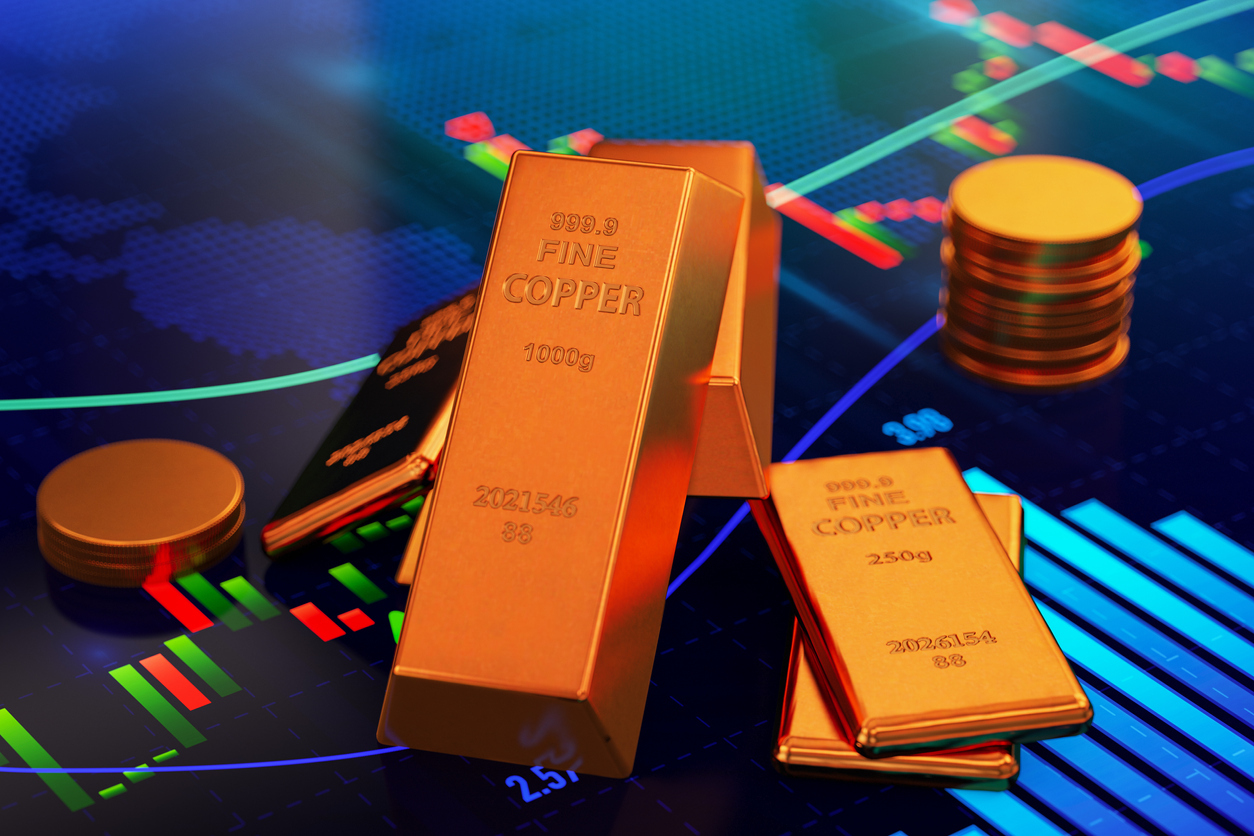Trading Commodities on the London Metals Exchange (LME)
The history of human use of metals traces back as far as 8,000 BC. Small copper objects appeared around 7,000 years ago with the first alloy metal coming around 3,000 BC – bronze. Bronze is made by melting tin and copper together.
Buyers and sellers of metals used in construction of tools and weapons began gathering in marketplaces to conduct their business.
The first formal market for buying and selling futures contracts for metals was established in London in 1571, the London Metals Exchange.

Top Australian Brokers
- Pepperstone - Trading education - Read our review
- IC Markets - Experienced and highly regulated - Read our review
- eToro - Social and copy trading platform - Read our review
What Is The London Metals Exchange?
The London Metas Exchange (LME) is one of the world’s largest marketplaces for buying and selling metal commodities, and the last remaining “open outcry” marketplace in the world.
In the LME traders gather in a ring – a circle of red seats from which buy and sell orders are shouted across the ring. When a trade is acknowledged, a runner takes the order to a fulfillment desk.
Open outcry trading was exciting, with markets around the world including galleries where the public could watch the action. Electronic trading is now the standard of operation. The US once featured two giant mercantile exchanges – the NYMEX ( the New York Mercantile Exchange) and the CME (Chicago Mercantile Exchange). The CME had more than `150 years of open outcry trading before the silence of electronic trading replaced the raucous interactions of most of their open outcry pits in 2021.
Unlike the CME that traded all commodities from copper to pork bellies and corn, the LME is strictly a home for trading metals.
Which Commodities Are Traded on the LME?
The LME is home to trading in base metals — aluminum, zinc, lead, copper, and nickel – and precious metals – gold, silver, and platinum. Iin 2005 the London Metals Exchange launched the first ever futures contract for plastic. Electric Vehicle metals have been added to their list, including cobalt, molybdenum, and lithium hydroxide.
Specifically, the LME trades options and futures contracts for these metals, along with some specialized offerings like Traded Average Price Options (TAPOs)., Monthly Average Futures, LME minis, and the index product LMEX.
Commodity prices can be highly volatile, leading to the adoption of options and futures trading millennia ago. The producers and users of a given commodity lock into a price at the time of sale with delivery delayed until a point in the future. Both sides take the risk that the commodity price at delivery will be higher or lower than at the point of the contract.
In addition to commodity producers and end users attempting to “hedge” their transactions against the risk of higher or lower pricing, the LME and other commodity exchanges around the world are home to speculators.
Speculators attempt to predict the price of a commodity in the future and purchase options contracts at those predicted price levels at a future date. As the date of contract fulfillment approaches, the speculator will sell the contract to a user who can benefit from the difference between the contract price and the current price.
How To Trade on the LME
The London Metals Exchange has three platforms for making trade – the 24 hour telephone market, the electronic trading platform LMEselect, or the traditional open outcry in the “Ring.”
Arranging chairs in a ring dates back to the origins of open outcry when London merchants gathering in a coffee house in the 19th century would draw a circle in the sawdust floor to signal the start of business as they gathered around the ring in the sawdust.
Ring trading is reserved for LME members. Retail investors can use LMEselect or the 24 hour telephone market, although all trades must be executed by LME members.
Ring trading takes place in intervals of five minutes, mowing from one metal commodity to the next beginning with steel, followed by aluminum alloy, tin, premium aluminum, copper, lead, zinc, nickel, and cobalt. The first trading session begins at 11:40 am GMT and the second session begins at 1:10pm GMT. Ring trading concludes at 5:00pm GMT.
Why Do Traders Check the LME Website?
Futures and options trading of commodities is more challenging than trading individual stocks and exchange traded funds (ETFs) Traders need a wealth of information not found on most financial websites. The LME has it all
Traders can obtain accurate price data, forecasts, and analysis about the futures contracts that are offered by the exchange. As the world’s largest metals commodities market, trading on the London Metals Exchange drives global commodity prices for the metals traded on the LME.
The website publishes pricing data derived from its trading activity. LME pricing activity is renowned for its transparency, with 50 unique data sets issued during the ring trading day and the other platforms provided by more than 50 commodity price vendors from all over the world.
Raw materials providers use LME price movements as a starting point for negotiating contracts for the sale of the metals or plastic and for anticipating future price movements.
Speculators also can better gauge future price movements from the pricing data available on the LME. In addition the site provides hubs for each commodity providing access to the official LME price, price history, forward price graphs, production and consumption figures, and ring trading times for futures contracts. The LME also offers free subscriptions to a data service put together by third party commodity market distributors and has a microsite for accessing real-time and historical commodity market data.
Finally, the London Metals Exchange has its own training and education course offerings, available both in-person and online. The coursework is one of its kind, with no one else offering education dedicated to a single marketplace provider. The LME site also offers a series of webinars, videos, and an online education platform called Hedgetutor.
The resources section also includes LME Insight, a series of updates and commentaries on timely issues and trends in the commodity metals, plastic, and EV metals markets
The LME is in the process of a complete overhaul and rebuilding of the LMEselect electronic trading platform.
The London Metals Exchange is the largest marketplace in the world for futures and options trading of base and precious metals, plastic, and EV metals. The LME has three trading platforms – Open Outcry, the electronic LMEselect, and the 24 hour telephone market. The LME website provides traders and speculators with more data and analysis on its markets than any financial website on the planet.





